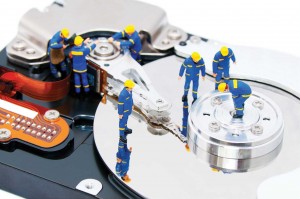 Deduplication is seen as an important strategy for data recovery, with the idea being if data is reduced, not only does it improve storage utilisation, it also makes it faster and easier to get to the core of the problem after a disruptive incident. CNME finds out more about the solution and how significant it should be in an organisation’s list of IT priorities.
Deduplication is seen as an important strategy for data recovery, with the idea being if data is reduced, not only does it improve storage utilisation, it also makes it faster and easier to get to the core of the problem after a disruptive incident. CNME finds out more about the solution and how significant it should be in an organisation’s list of IT priorities.
The last thing CIOs need is to be told there is another solution in the data arena that they must be implementing in their organisation.
Business intelligence, business continuity, business analytics, disaster recovery, data loss prevention. The list goes on and on of things CIOs should supposedly be doing to both make the most out of data, whilst protecting it at the same time.
Data deduplication is designed to eliminate duplicate copies of repeated data. It uses a specialised data compression technique where unique chunks of data are identified and stored during a process of analysis. As the analysis continues other chunks are compared to the stored copy and whenever a match occurs, the redundant chunk is replaced with a small reference that points to the stored chunk.
“Deduplication can shrink bloated back-up windows and speed restore times without disrupting current back-up procedures,” says Stephen Day, Systems and Technology Storage Sales Leader, GBM. “Deduplication technologies have evolved considerable over the last few years and have delivered on the promise of improving back-up and recovery operations.
“The new technologies in data deduplication consume less storage and utilise infrastructure, such as network bandwidth, more efficiently. Deduplication significantly reduces TCO and provides opportunities to save money, while accomplishing back-up and recovery goals more efficiently. It can save a significant amount of money and is something all business should explore.”
According to EMC, all companies need to adopt a purpose built back-up appliance with deduplication to transform their back-up operations.
“Back-up windows aren’t getting any smaller – without deduplication, recovery performance is jeopardised because there may not be enough time to properly and consistently back-up applications and systems. Also, recovery time expectations are getting shorter. It is no longer acceptable to hunt through back-up tapes to find the right one with the file or the application that needs to be recovered. Business users are demanding fast recovery,” says Kelly Brown, Director, Product Marketing, EMEA, EMC Back-up Recovery Systems Division.
However, Frost & Sullivan believes that, whilst data deduplication solutions are important, they are not as critical as data recovery or security.
“The importance of this solution depends on the type of data and whether the data is stored multiple times by multiple users across the enterprise’s network. CIOs are advised to identify and decide if a data deduplication solution would bring clear ROI,” says Jonas Zelba, Sr. Research Analyst, Information and Communication Technologies Practice, MENA, Frost & Sullivan.
The downsides of deduplication
Zelba also points to the downsides of deduplication, namely potential data loss and delays in recovering data from a data recovery solution.
“A simple example is when someone saves a Word file with the same name that already exists on the desktop and overwrites it to then realise that data in those two files was different. However, the technology has matured with time and there are many preventive solutions to avoid this, but data loss error is still possible,” he says.
Luai Bahder, Technical Director, Smartworld, adds: “Most challenges are with source deduplication methods, where additional components are required at the client side. Also, another challenge would be with the multiple storage systems deployments.”
Expanding on the challenges, Allen Mitchell, Senior Technical Account Manager, MENA, CommVault, says most are related to performance, increased complexity of management and island of deduplication.
“Customers must consider the implications of deduplication within the context of their entire data management and storage strategy,” he adds.
Day agrees, claiming that multiple challenges will come up without adequate planning, size and a supported environment.
“Challenges include a lack of adequate resources for optimal deduplication, insufficient capacity to cater for growth and insufficient performance to meet an organisation’s back-up and recovery SLA,” he says.
However, Zelba says the technologies of deduplication are now mature enough to know the ratios and key performance indicators.
“These can be monitored and adjusted. But you do need to understand the performance metrics and your targets for DD, before your deploy, as you deploy and afterwards,” he says.
Asides from the aforementioned challenges, the usual obstacle of proving ROI is something CIOs must be sure they will be able to do before taking the proposal to management.
Mitchell says return comes simply through being able to store more data on the same amount of disk capacity. “The benefits for organisations are clear in terms of increased efficiencies and cost savings achievable via deduplication,” he says.
Day adds that ROI can be measured by looking at the value-add from implementing a high performance tier, disk-based back-up to the strategy.
Working with IDC, EMC quantified the ROI from back-up transformation that included implementation of deduplication and purpose-built back-up appliances.
IDC found that ROI can be measured in terms of hard cost saving, end user time saving and IT staff productivity.
A growing demand
When it comes to demand, Bahder says the Middle East region remains a very large market for data deduplication products.
Mitchell adds that this adoption continues to grow in the region as organisations look for effective methods of managing data growth, while controlling costs. “The technology has matured and with proven business benefits, deduplication is fast becoming the accepted standard for all disk based back-ups,” he says.
EMC ran a survey of 1,000 IT decision makers in the region and found that 25% of organisations use deduplication today and another 33% would like to.
Day believes it is becoming a mandatory requirement by businesses in the Middle East that are implementing disk-based solutions into their back-up environment.
For those organisations that haven’t implementing it, and don’t yet plan to, Bahder reiterates that the solutions are highly recommended on visualisation environments or for the organisations that have large volumes of data storage requirements, whilst Mitchell says data deduplication can have a direct impact on data protection, disaster recovery and business continuity.
“Data protection, disaster recovery and business continuity have been consistent priorities for all organisations. For these reasons, coupled with the ROI and TCO benefits, deduplication should be viewed as an essential part of any data management solution,” he says.
Zelba agrees that deduplication is an incremental system to existing IT setups.
“The priorities must be to ensure disaster recovery, high speed transmission and efficient servers etc. However, if you have these systems in place, then deduplication is a high priority as it would help maximise the investment in the current IT setup.”





